For a little over a month, I've been getting off my subway one stop early and walking the rest of the way home. I've been playing soccer twice a week, and trying to drink eight glasses of water every day. I've been running more, eating better, but still not sleeping nearly enough.
I've been testing the Fitbit Flex, the first fitness wristband from the company that deserves a lot of credit for popularizing wearable fitness devices in the first place. From its namesake Fitbit Tracker to the newer One and Ultra, the California-based company has typically been known for devices that clip to your shirt or your pants and track your every movement. But every Fitbit user seems to have a tale of a lost or accidentally machine-washed tracker, so the company came out with the Flex. It's a $99 bracelet that purports to help you be more active, eat better, sleep better, and become far more attractive to the opposite sex. (One of those isn't strictly true, but it kind of is.)
But you could fill both your arms with all the available gadgets that claim to do those things. From Jawbone to Nike to Samsung to even a slew of apps for your phone, there are a million and counting ways to track your activity. So what does Fitbit offer that makes it special? Why should you spend $99 on the Flex over an Up or a FuelBand, or a free iPhone app? After lots of exertion in the name of journalism, I think I have an answer.
Just as Google Glass will only be ubiqutious when it's built into the glasses so many of us already wear, fitness bands need to be totally unobtrusive before they'll catch on with everyday people. In the interim, there are two plausible approaches: make your device beautiful like the Up, which people would wear even if it didn't do anything; or make it as thin, light, and inconspicuous as possible. Fitbit took the latter route, and the Flex is the best effort I've seen yet. Three quarters of the band is just a thin, flexible rubber bracelet that feels like a wristband you'd get at a bar or a nightclub. The teeth on one end go into two of a series of slots on the other, and it holds tight, though you'll leave a mark on your wrist shoving the two mismatched pieces together. The solid matte-colored rubber is cheap and sort of boring, without any of the Up's stylishness, but I went whole days without noticing the Flex was there. That's exactly what I want from this type of device.
The bracelet itself is actually just a holder — all of the Flex's technology is stored inside a black rectangular box about the size of my pinky toe, which slides into a pocket in the wristband. That makes the bracelets cheap and interchangeable, so you can mix and match among the available Slate, Black, Teal, and Tangerine models as you see fit. It also means Fitbit could make lots of other accessories for the tracker, and I'm betting we'll soon see Flex-compatible shoes, belt clips, necklaces, and much more.
The modular design makes charging a pain since you have to take the tracker out, insert it into Fitbit's odd and proprietary USB cradle, and then put it back in when it's charged — a few times I put the bracelet on without the tracker in it, which left me basically just wearing a rubber band on my wrist. Luckily, Fitbit's estimation of five to seven days of battery life is pretty accurate, so worrying about finding the weird dongle and keeping the Flex charged isn't too much of a concern.
When you're wearing the Flex, there's very little data readily available on the band itself. Double-tapping the translucent plastic strip on the bracelet gives you a rough estimate of how you're doing, with a series of LEDs lighting up your progress in 20 percent increments. (Those dots became deeply disappointing on days when I got to 6PM and saw but one flashing LED.) You'll need your computer or cellphone to really dig into your Fitbit data, and if you're attentive to your Flex there's a lot to see.
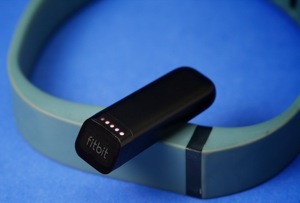
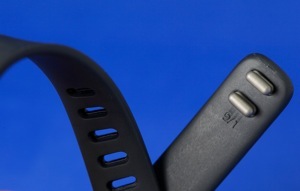

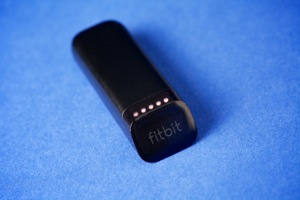

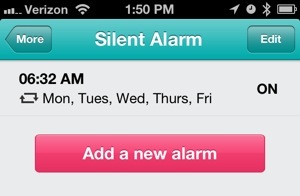
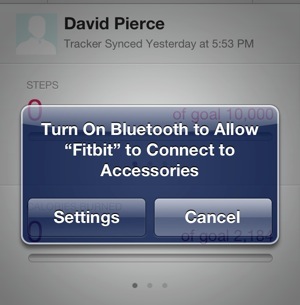
The Flex collects a lot more than five dots-worth of data, and makes nearly all of it available in web apps or on your Android or iOS device. You can sync your tracker via the USB cable (there's a helper app for Windows and OS X that collects and uploads your data), or directly to your phone via Bluetooth 4.0. It's the latter feature I really loved about the Flex: keeping your data current is so much easier than with the Up, and it hardly ever requires you to take off and put on the device. Plus I could actually open the app, sync the tracker, and walk while seeing the app update my steps in real time, which is utterly pointless but also kind of fun.
Counting steps is still Fitbit's bread and butter
In fact, you really never need to take the Flex off except to charge it for a couple of hours every week. It's waterproof enough to take in the shower, and unnoticeable enough to wear while you type (the tracker sits on top of your wrist, so all that's underneath your arm is a thin strip of rubber). It's even comfortable enough to sleep with, and Fitbit has plenty of features for those moments when you're not so active.
The Flex tracks your sleep much like the Up, though with far less power. You have to manually tell the device when you're going to sleep by tapping incessantly on the Flex until it vibrates (those are actually the instructions), and then remember to disable Sleep Mode when you wake up; it won't shut off when it notices you walking around or even when you turn off your alarm, which is an annoying oversight. It's not nearly as smart as the Up, and Fitbit seems to know that: the Flex's vibrate-your-wrist-to-wake-you alarm clock feature doesn't try to guess when you're sleeping lightly and would wake up bright-eyed and bushy-tailed, like the Up does. It just goes berserk on your arm at the time you set — and for me, especially on lazier mornings when eight more minutes of sleep sounds like a gift from Heaven, that works just fine.
Steps are the core competency of the Flex, as with most other fitness bands – you're given an initial daily goal of 10,000, which you can fine-tune as you gather data and see your own performance. The Flex measures steps about as accurately and consistency as any other device, nearly always within a few steps of what the Up recorded at the same time – and since you can actually open the app and watch it count while you walk, it's not hard to tell how well it's doing. That said, it's not hard to trick the device. I could put on the Flex and just sort of shake my wrist around for a minute, and poof: 200 steps. If you're looking to cheat your way through a "who can be most active" contest with your friends, the Flex is your best weapon, but unless you're really trying to game the system, the system works fine.
Flex only counts your steps for you, but it can store a tremendous amount of other data if you supply it. It can collect your weight automatically if you have an Aria scale, or you can input it manually. Sleep data exists in that half-automatic, half-manual space, but food and activity are completely dependent on your input. It's relatively easy to keep track of either: there's a handy slider for inputting the water you drink and there's a robust database of foods and activities, and all you have to do is pick one and then go about your day. But whether you're biking or running stairs or lifting weights or drinking one brand of coffee or another, there's a surprising amount to keep track of – and if you're not walking or sleeping the Flex doesn't know what you're doing.
If you're the diary-keeping type, it's a cinch, but I found myself frequently forgetting to input a meal or note the time I ran 12 blocks because I was late for a meeting. At that point, it started to feel like all my data was bunk and incomplete, and why not just ditch it all and go back to steps?
I still don't have a good answer to that question, because the Flex (and sadly most of its competitors) doesn't give me one. Steps are obvious: it's good when I take more than I did yesterday, and fewer is bad. There's definitely something to the idea that collecting more data is useful in itself, and I did notice that when I drink more coffee I tend to go to sleep later and not sleep very well (because, well, of course). Fitbit didn't tell me any of that, though — it's just a locker for all my habits and activities, waiting for me to sift through for trends and useful details.
The next step for Fitbit and others is to answer that "so what?" question, and tell me things like, "Hey dude, drink less coffee at night and you'll sleep better," or "You never walk around between 10 and four, maybe you should take a break." That's what Jawbone hopes to solve with the Up Platform, which lets you plug your data into third-party apps that offer such recommendations; Fitbit has something similar, with a few handy apps like Tictrac that take its data, but it's not as robust as what Jawbone offers. Fitbit does offer a few helpful tips, but you'll need a $49.99 / year Premium account before it'll start telling you if your diet is a little out of whack or if you're less active than most people your age. And I want more than just historical trends and basic diet advice. Mint tells me when a new credit card will save me money or when I should stop spending so much money on beer, and I likewise need Fitbit to tell me how to sleep better and be more active.
I know how I am – how do I do better?
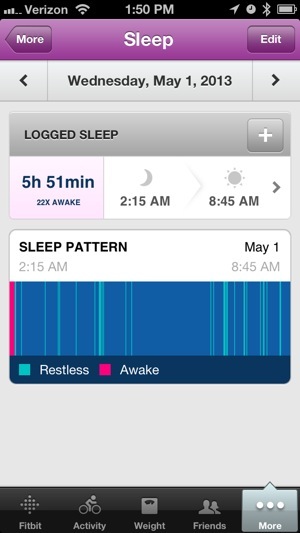
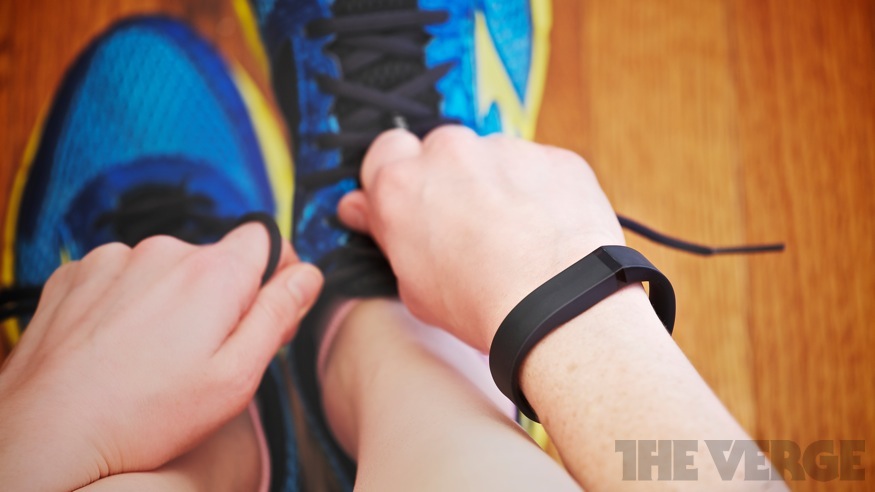
Nike's FuelBand cleverly avoids these diminishing returns of data input, which is part of what makes it compelling. Nike doesn't care what you eat, or how well you slept. It doesn't even provide data you understand, like calories or steps — it just has Fuel, the mysterious term for how active your FuelBand determines you are. If you get more of it today than you did yesterday, great; if you don't, you should probably try harder tomorrow. There's a lot more data and a lot more information in what Fitbit collects and provides, but it's ultimately a lot of work to draw more detailed conclusions.
At the very least, I wish my Flex would remind me to input all the data it requires. The Moves app for iOS has a clever integration with Foursquare, and will bug you later with a "Hey, you checked in at TGI Friday's, what'd you eat?" message. The Flex would really benefit from something similar, or a daily push notification gently reminding me to log my food or activity for the day. If I've gone a whole day without adding anything to Fitbit's database, it's probably not because I didn't eat. Or sleep. Or move around.
For its part, the Fitbit app is both simple to use and nice to look at. It's divided into sections — Activity, Weight, Alarm, and so on — and makes it really easy to log or see activity, and track your progress over time. To see your trend lines and pie charts, you'll need to be on fitbit.com, where you get a bigger and better dashboard for all your information. The whole Fitbit ecosystem works far better cross-platform than any of its competitors: you can use iOS or Android (though your phone has to have Bluetooth 4.0, which is far from certain), or just sync through your computer without ever needing your phone at all. Fitbit offers some nifty social features as well, letting you either encourage or compete with your friends in your quests to be more active and healthier.
Fitbit still hasn't answered the 'now what?' question
The $99.99 Fitbit Flex is on one hand the exact opposite of the $129.99 Jawbone Up. The Up is intentionally obvious, a piece of jewelry that also happens to be functional; the Flex just tries to get out of your way as much as possible. There's a case to be made for either, but for me, the Flex works better as a device I don't have to take off when I type, or plug in constantly to charge and sync. It's much more set-it-and-forget-it, and that works better for me. It unquestionably made me more active just by wearing it – I became hyper-aware of my step count, found myself jogging in the evenings when I hadn't walked around much during the day, and even walked to the second-closest bodega to buy groceries. There's something inherently placebic about that, but it sure works.
Where the two devices are similar is in their shortcomings. Jawbone and Fitbit both collect plenty of data... and just don't do much with it. The Up could be more useful now thanks to Jawbone's new API and its integration with IFTTT, RunKeeper, and others, but it requires quite a bit of work and app-jumping to do all that properly. By avoiding this entirely, and intentionally collecting no data other than whether or not you do better than yesterday, Nike's FuelBand is perhaps an easier sell – it's less work for ultimately the same reward. But there's a lot more to see with the Flex, and I can wear the band while I work.
Fitbit has nearly figured out how to make a fitness device you both won't lose and won't notice – that's not an easy feat. The next thing it needs to do is convince me, and everyone else, why it's worth spending $99 to track how much you eat and how many steps you take. Whatever company can help me turn all that information into better sleep wins my wrist — at least until someone builds it all into the watch I already wear.
:format(webp)/cdn.vox-cdn.com/uploads/chorus_asset/file/12801003/fitbit8-hero.1419979525.jpg)
:format(webp)/cdn.vox-cdn.com/uploads/chorus_asset/file/12801003/fitbit8-hero.1419979525.jpg)
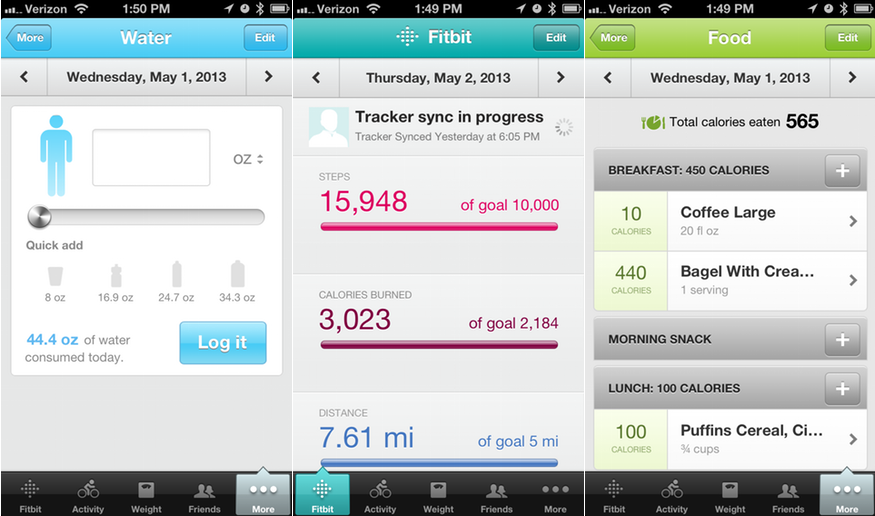
Share this story